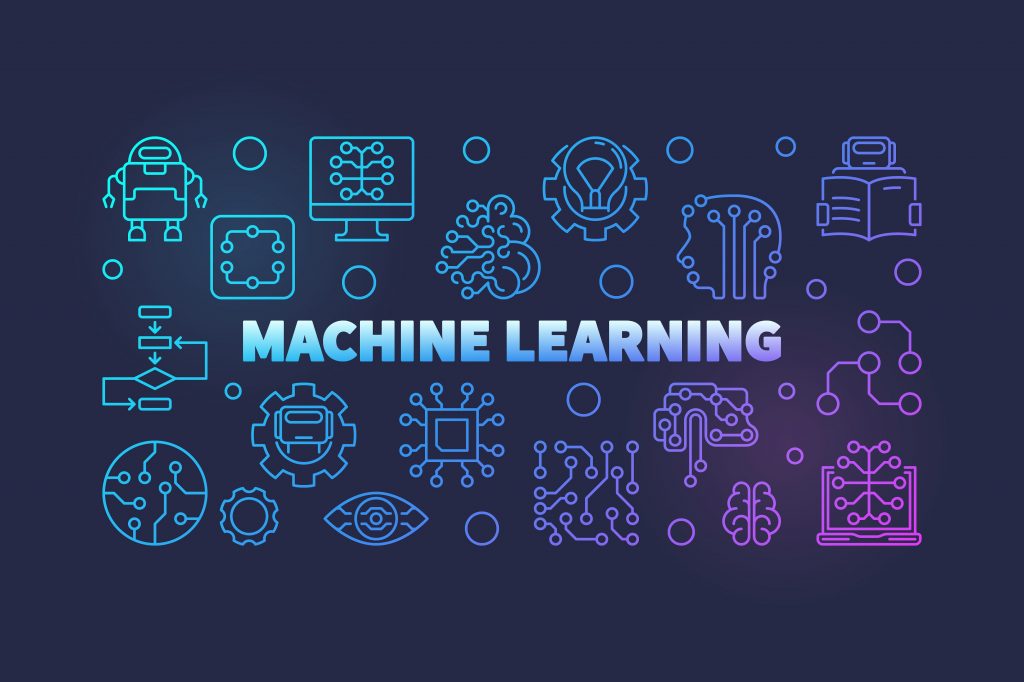What is Machine Learning?
What is Machine Learning?
Machine Learning is a subset of artificial intelligence that focuses primarily on machine learning based on your experience and making predictions based on your experience. It allows computers or machines to make decisions based on data instead of explicitly programming them. To perform a certain task. These programs or algorithms are designed to learn and improve over time when exposed to new data.
How machine learning works
Supervised algorithms require a data scientist or a data analyst with machine learning skills to provide the desired input and output, and provide comments on the accuracy of the predictions during algorithm training. Data scientists determine what variables or characteristics the model should analyze and use to develop predictions. When the training is completed, the algorithm will apply what has been learned to the new data. Unsupervised algorithms do not need to be trained with the desired outcome data. Instead, they use an iterative approach called deep learning to review the data and reach conclusions.
To get in depth knowledge on Machine Learning You can enroll for free demo Machine Learning Online training
unsupervised learning algorithms, conjointly known as neural networks, are used for a lot of advanced process tasks than supervised learning systems, as well as image recognition, speech to text and linguistic communication generation. These neural networks work by combining several samples of coaching information and mechanically distinctive delicate correlations between many variables. Once trained, the algorithmic rule will use its association info to interpret new information. These algorithms solely became viable within the era of huge information, since they need giant amounts of coaching information.
Machine Learning Techniques
Supervised learning
Supervised learning algorithms are trained victimization tagged examples, like Associate in Nursing input wherever the specified output is thought. For example, a device may have data points labeled “F” (failed) or “R” (executed). The learning formula receives a collection of inputs together with the corresponding correct outputs, and therefore the formula learns, by comparison, its actual output with the proper outputs to search out errors.
Then modify the model accordingly. Through methods such as classification, regression, prediction, and gradient augmentation, supervised learning uses standards to predict tag values in additional, unlabeled data. Supervised learning is commonly used in applications where historical data predict probable future events. For example, you can anticipate when credit card transactions are likely to be fraudulent or which insurance clients may file a claim.
Unsupervised Learning
Unsupervised learning finds hidden patterns or intrinsic structures in the data. It is used to extract inferences from data sets that consist of input data without unanswered responses. Clustering is the most common unsupervised learning technique. It is used for exploratory data analysis to find hidden patterns or clusters in the data.
Applications for cluster analysis embody factor sequence analysis, marketing research and beholding, for instance, if a mobile phone company desires to optimize the locations wherever they build cell towers, they’ll use machine learning to estimate the number of teams of individuals United Nations agency rely on their towers. A phone will solely consult with one tower at a time, that the team uses bunch algorithms to style the most effective location of itinerant towers to optimize signal reception for its client teams or groups. Common clustering algorithms include k-means and k-fears, hierarchical clustering, Gaussian mixing models, hidden Markov models, self-organized maps, FC media clustering, and subtractive clustering.
Learn Machine Learning Interview questions
Semi-Supervised Learning
It is a hybrid approach (combining supervised and unsupervised learning) with some labeled and other unlabeled data. For example, Google Photos automatically detects the same person in several photos of a vacation trip (grouping). You only need to name the person once (supervised), and the brand name is attached to that person in all the photos.
Reinforcement machine learning algorithms
The automatic reinforcement learning algorithm is a learning method that interacts with your environment, producing actions and discovering errors or rewards. Trial and error research and delayed reward are the most relevant characteristics of reinforcement learning. This method allows machines and software agents to automatically determine the optimal behavior within a specific context to maximize their performance. Simple reward feedback is required so that the agent knows which action is the best; this is known as the booster signal
Application of Machine learning
Augmentation
Machine learning, which helps humans in their daily tasks, personally or commercially, without having complete control of production. This machine learning is used in different ways, such as Virtual Assistant, data analysis and software solutions. The main user is to reduce errors due to human prejudices.
Automation
Machine learning, which works completely autonomously in any field without the need for human intervention. For example, robots that perform the essential steps of the process in factories.
Finance Industry
Machine learning is growing in popularity in the financial sector. Banks are mainly using ML to find patterns within the data, but also to prevent fraud.
Government organization
The government uses ML to manage public safety and public services. Take the example of China with massive facial recognition. The government uses artificial intelligence to avoid the jaywalker.
Healthcare industry
Healthcare was one of the first industries to use machine learning with image detection.
Marketing
The extensive use of AI is in marketing thanks to abundant access to data. Before the era of mass data, researchers developed advanced mathematical tools, such as Bayesian analysis, to estimate the value of a client. With the data boom, the marketing department relies on AI to optimize customer relationships and the marketing campaign.
#machinelearningonlinetraining #machinelearningcourse #machinelearningtraining #machinelearning
